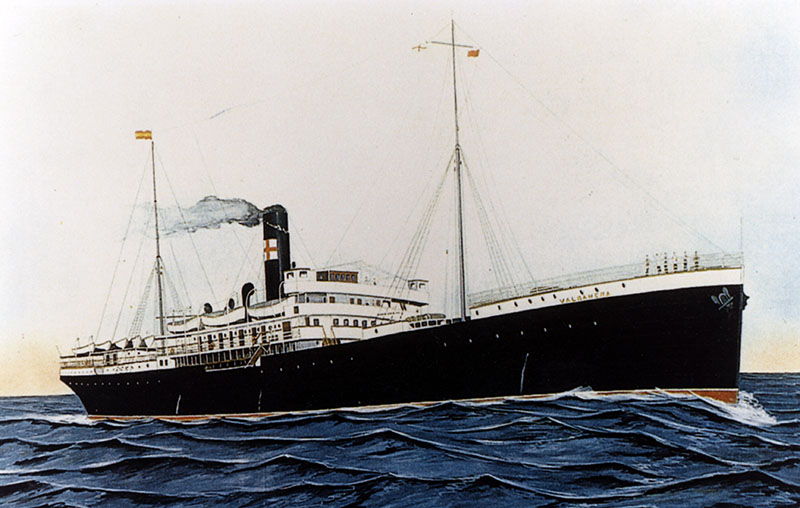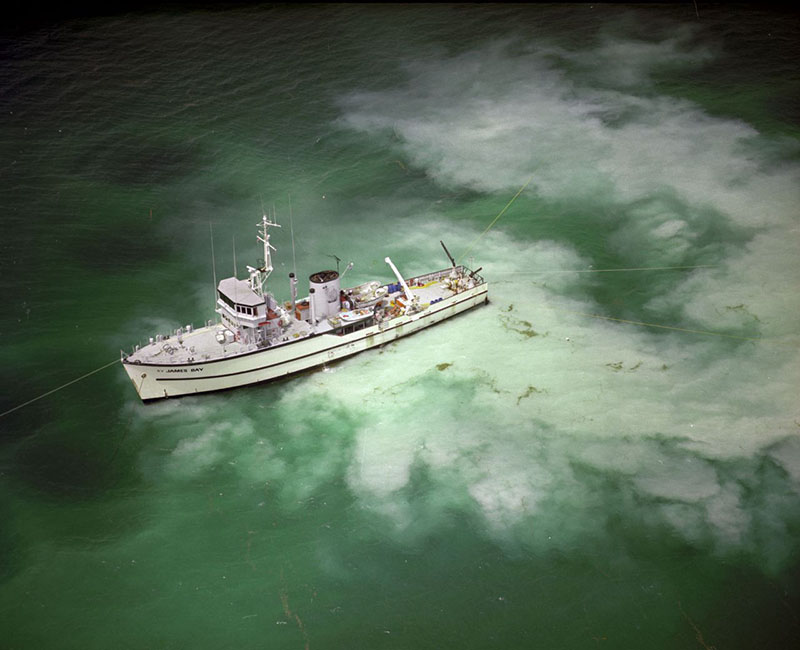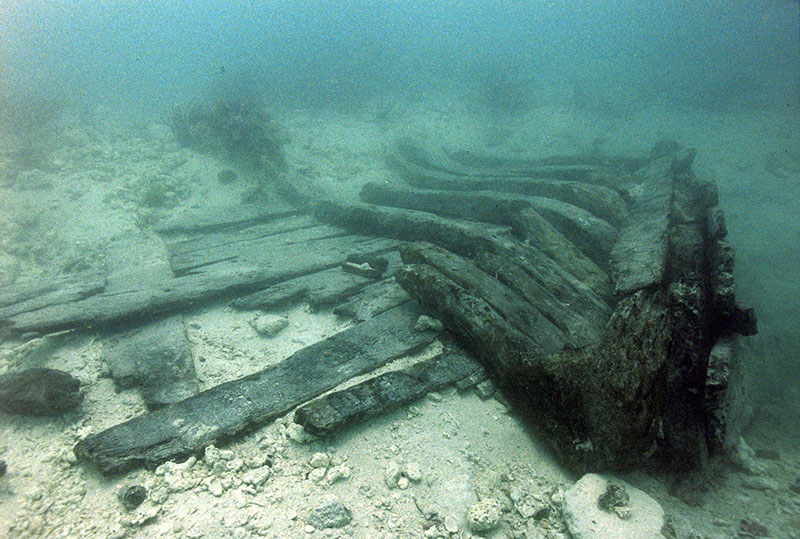
June 14-27, 2021
Archaeologists and ecologists from the NOAA Office of National Marine Sanctuaries (ONMS) and the University of Miami’s Rosenstiel School of Marine and Atmospheric Science (RSMAS), with funding support from NOAA Ocean Exploration, conducted an exploratory marine archaeological remote sensing and diving survey to locate and characterize archaeological sites within an area of Florida Keys National Marine Sanctuary (FKNMS) known as the “Quicksands,” located west of Key West, Florida. The project team boarded the research vessel M/V Makai on June 14, 2021, and departed for the survey area approximately 30 miles from Key West, where they conducted research until June 27.
The Quicksands border the Straits of Florida and divide the Gulf of Mexico from the Atlantic Ocean. The project area encompasses a significant navigation hazard for vessels transiting one of the busiest shipping routes in the Western Hemisphere. The area’s over 500-year history of maritime traffic, hidden shoals, and highly variable and destructive weather has resulted in numerous shipwrecks from all periods of Euro-American history.

British chart from 1771 illustrating the limited information available at that time to accurately chart the western end of the Florida Keys. Image courtesy of the Norman B. Leventhal Map Center , Boston Public Library. Download image (jpg, 5.2 MB).
While this area lies within a national marine sanctuary, it has not been explored systematically for archaeological sites. Historic shipwreck salvage interests have made significant finds in the Quicksands, such as the Nuestra Señora de Atocha and Santa Margarita, but little information about other finds is available. The focus on precious metal carrying vessels has left a significant gap in understanding the area’s archaeological resources and maritime cultural landscape.
One shipwreck reported in the survey area is the Spanish steamship Valbanera, which sank in a 1919 hurricane. All hands, almost 500 persons, perished. Most were emigrating from Spain to Cuba to start new lives. Sport divers and historians have visited a shipwreck at Halfmoon Shoal believed to be the steamship, but it has not been archaeologically investigated to verify their claims. If confirmed to be Valbanera, it would be a highly significant archaeological site connecting Spain, Cuba, and the United States.

Pinillos Line steamship Valbanera believed sunk in the Quicksands. Image courtesy of Monroe County Public Libraries. Download image (jpg, 2.3 MB).
The project’s maritime archaeological remote sensing methodology will utilize high-frequency side-scan sonar and twin magnetometers to survey Halfmoon Shoal at the shallow western end of the Quicksands. Ideally, this investigation will result in the location of sunken vessels preserved under the area’s shifting sands. The research team will also conduct focused surveys at reported shipwreck and archaeological site locations throughout the area. These efforts will identify resources contributing to the larger Quicksands cultural landscape, including navigation aids and other structures associated with naval use of the area.

M/V St. James Bay engaged in historic shipwreck salvage of Nuestra Señora de Atocha in the Quicksands. Image courtesy of Dale McDonald Collection, Monroe County Public Libraries. Download image (jpg, 445 KB).
Investigating shipwrecks and other archaeological sites in the highly mobile sediments of the Quicksands offers opportunities for project ecologists to assess “human-made” hard bottom habitats that are believed to be ecological hotspots in areas otherwise devoid of sessile invertebrate organisms. Establishing the character of these biologic communities offers a better understanding of the area’s intermediate place between the remote, protected reefs of the Dry Tortugas and the rest of the Florida reef tract currently facing serious declines from a coral disease outbreak.

Well-preserved hull remains from the slave ship Henrietta Marie, wrecked in 1700 at nearby New Ground Reef, exemplifying the potential for organic preservation. Image courtesy of Dylan Kibler, Mel Fisher Maritime Museum.
Documentation of archaeological sites located by remote sensing survey will be accomplished through multi-image photogrammetry. This technique is expected to allow the small research team to rapidly characterize the sites in a challenging, current-swept environment. The resulting scaled, three-dimensional models will also capture the site’s biological composition, allowing for further study by ONMS and RSMAS researchers. Additionally, the project team will utilize a 360⁰ panoramic camera system to create immersive visualizations of located shipwrecks, allowing the public to virtually experience these remote sites.